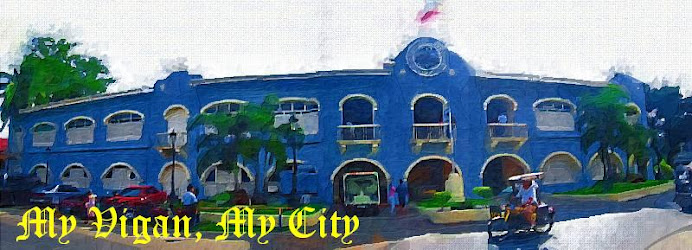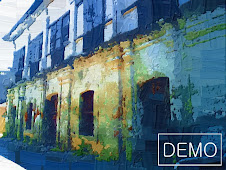
(An article published at the Vigan Chronicle, August 2008 issue)
A year after it begun, the City Planning and Development Office is now in the final stage of data processing, the initial step in the formulation of the Comprehensive Land Use Plan or CLUP. Initial data came from the GIS (Geographic Information System) Survey done by the secretaries of the thirty nine barangays of Vigan City in August 2007. The data processed from the information found in this survey shall be used as the foundation for the formulation of the Comprehensive Land Use Plan (CLUP) 2007-2017.
The secretaries, aided by their councilmen and other members of NGOs, collected the data by going from house to house within the barangay. These were then taken to the Planning Office for validation of the Map Codes which show the exact location of the houses occupied by the different households, buildings like schools, churches, chapels, day care centers and barangay halls, commercial and business establishments, clinics, including agricultural and vacant lots and bodies of water. The raw data from the accomplished surveys were encoded and then sent back to the barangays for revalidation. In revalidation, the survey forms were taken back to the respondents to fill in the blank columns to complete the data required for each household for a more accurate representation of the barangay. Other irregularities like misspelled names were also considered.
If the process seems long and tedious, it is because a good plan is founded on accurate data. And that is what the Survey is all about. The results of the survey done in the thirty nine barangays shall form the database of Vigan City’s Land Use Plan.
What happens after the data from the survey forms have been processed?
The Beauty of GIS
As the acronym implies, GIS or Geographic Information System, the information from the survey sheets when processed shall yield the demographic profile of the barangay like population, number of households, data on gender, age groups, occupation, educational attainment, and where they are located within the barangay, thus the entry for a Map Code in the survey. If we analyze the word Geographic, we find two words, Geo and graph. Geo means land or earth. Graph, which means the coordinates, latitude and longtitude, or that which locates or points to the exact location of people and buildings existing on the face of the earth, the portion of which we are concerned to be Vigan City.
GIS is a beautiful software. It sounds technical, but the graphic image it produces is very useful and extremely relevant to those who will use it and understand how it works. A geographic information system (GIS) integrates hardware, software, and data for capturing, managing, analyzing, and displaying all forms of geographically referenced information. It yields more than just a map as it is often associated with. It does sound high-tech because it looks very much like the images in Google Earth. Well, it is because the technology behind Google Earth is GIS.
The data fed from the survey forms will determine the kind of picture produced of a barangay when viewed as a GIS map.
So, when data is fed into the system, the GIS will automatically yield a map that shows in the planning area the spaces for residential, agricultural, commercial, and bodies of water. As prompted with a click of the computer mouse, data required will be shown, or answer questions like “Where are the poor located in Vigan City? Where are the professionals? Where are the women and children? Where are the OFWs? …and more. In other words, the GIS System translates data into images that will make planning easier. In essence, the GIS points out the areas that need development, and what kind of development it needs. Having identified the kind of development needed, we will know how we will arrange or build our environment. The arrangements of buildings, manufacturing facilities and businesses, and playgrounds affect land values, the provision of community or public services like transportation, water and sewer lines, education, agriculture, and emergency services. In short, the state of the social, economic and infrastructure sectors of the area shall be visible from the geographical map and will provide the direction of development that Vigan City must take.
GIS, therefore is a great tool for development planning. It tells how we look now and help us answer, “How will we look like in the future?”

 BATCH 2 OF 2008 Mataderos held their graduation rites on August 28, 2008 at the Vigan Culture and Trade Center. Gracing the occasion was the School's Vice President, Vice Mayor Francisco Ranches, Jr, who also confirmed their graduation after being presented to him by the School Registrar, Geozita H. Guerrero. Also present was TESD Specialist, Mr. Arnel Gallardo, the school's Student Affairs Officer, Edgar de la Cruz.
BATCH 2 OF 2008 Mataderos held their graduation rites on August 28, 2008 at the Vigan Culture and Trade Center. Gracing the occasion was the School's Vice President, Vice Mayor Francisco Ranches, Jr, who also confirmed their graduation after being presented to him by the School Registrar, Geozita H. Guerrero. Also present was TESD Specialist, Mr. Arnel Gallardo, the school's Student Affairs Officer, Edgar de la Cruz. 



